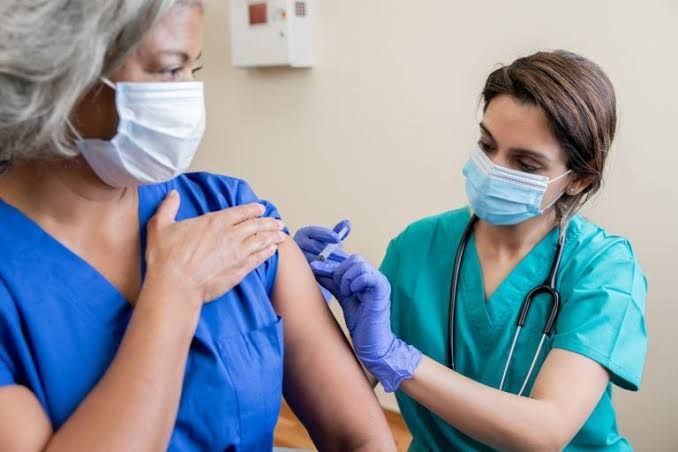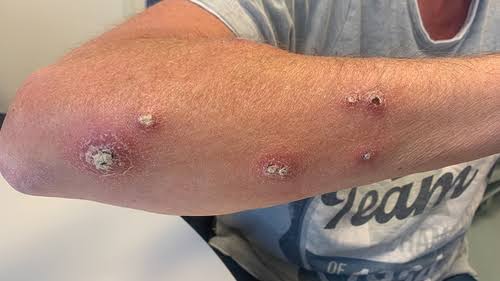
Injections are among the most common medical procedures performed globally, serving as vital tools for vaccination, medication delivery, and therapeutic interventions. However, the seemingly routine nature of an injection belies a significant potential for harm if proper safety protocols are not rigorously followed. Unsafe injection practices constitute a critical public health challenge, contributing substantially to the global burden of preventable infectious diseases.
Understanding Injection Safety
Injection safety refers to a set of practices and procedures designed to ensure that injections administered to patients do not transmit infectious diseases to the patient, the healthcare provider, or the community. It encompasses the entire lifecycle of an injection, from the preparation of the medication and the patient, through the injection itself, to the safe disposal of sharps waste. The bedrock of injection safety is the principle of preventing the transmission of pathogens, particularly bloodborne viruses, through contaminated needles, syringes, or other equipment.
Globally, an estimated 16 billion injections are administered each year, with varying degrees of adherence to safety standards. The context of injection safety extends beyond clinical settings to include non-medical environments such as tattooing parlors, piercing studios, traditional healthcare practices, and illicit drug use. Understanding injection safety is paramount because unsafe practices are directly linked to significant morbidity and mortality, placing immense strain on healthcare systems and eroding public trust. Key components of a safe injection practice include:
- Aseptic Technique: Maintaining sterility of instruments and preventing contamination during the preparation and administration of the injection.
- Use of Sterile, Single-Use Devices: Ensuring that every needle and syringe used is sterile and used only once for a single patient.
- Safe Sharps Disposal: Prompt, correct disposal of used needles and syringes into puncture-resistant containers.
- Standard Precautions: Hand hygiene, use of personal protective equipment (PPE), and other infection control measures.
The commitment to injection safety is not merely a clinical recommendation; it is an ethical imperative and a cornerstone of universal health coverage, aiming to protect everyone from preventable harm.
Hazards of Unsafe Injections and Its Prevention
The consequences of unsafe injection practices are profound and far-reaching, posing significant risks to individuals and public health. These hazards can be broadly categorized into infectious and non-infectious complications.
Hazards of Unsafe Injections:
- Transmission of Bloodborne Pathogens: This is the most critical hazard, including Hepatitis B Virus (HBV), Hepatitis C Virus (HCV), and Human Immunodeficiency Virus (HIV). These viruses are efficiently transmitted through direct blood-to-blood contact, making shared or reused needles and accidental needle-stick injuries highly effective transmission routes.
- Local Infections: Introduction of bacteria or fungi from contaminated skin, equipment, or medication can lead to local infections such as abscesses, cellulitis, or skin ulcers at the injection site.
- Systemic Infections: Local infections can escalate into systemic infections like sepsis (blood poisoning), which is a life-threatening condition requiring urgent medical intervention.
- Nerve Damage: Improper injection technique can result in direct trauma to nerves, leading to pain, numbness, or paralysis in severe cases.
- Allergic Reactions and Drug Interactions: Contamination of multi-dose vials or administration of incorrect medications due to poor labeling or lack of knowledge can lead to adverse drug reactions.
- Environmental Contamination: Unsafe disposal of sharps waste poses a risk to waste handlers, scavengers, and the general public through accidental needle-stick injuries, potentially spreading infections beyond the clinical setting.
- Psychological and Economic Burden: The fear of contracting diseases from healthcare settings can deter individuals from seeking necessary medical care. The economic cost of managing complications from unsafe injections, including prolonged hospital stays and treatment for chronic diseases, is substantial.
Prevention Strategies for Unsafe Injections:
Preventing the hazards associated with unsafe injections requires a multi-faceted, systematic approach involving policy, practice, and education:
- Universal Standard Precautions: Healthcare workers must consistently apply standard precautions for all patients, regardless of their presumed infection status. This includes meticulous hand hygiene before and after contact, using appropriate personal protective equipment (e.g., gloves), and ensuring proper respiratory hygiene.
- Strict Aseptic Technique: Maintaining sterility is paramount. This involves preparing the injection site with an appropriate antiseptic, using sterile needles and syringes for every injection, and preparing medications in a clean area, free from contamination.
- “One Needle, One Syringe, One Time”: This golden rule dictates that a sterile needle and syringe must be used for each patient, and for each entry into a medication vial or bag, even if the needle is changed. Multi-dose vials must be used with strict adherence to aseptic technique, discarded if sterility is compromised, and never used on more than one patient when possible.
- Safety-Engineered Devices: The adoption of needles and syringes with safety features (e.g., retractable needles, needle-less connectors) significantly reduces the risk of needle-stick injuries for healthcare workers.
- Safe Sharps Waste Management:
- Puncture-Resistant Containers: All used sharps must be immediately deposited into clearly labeled, rigid, puncture-resistant, leak-proof containers placed at the point of use.
- Proper Segregation: Sharps waste must be segregated from general waste and managed according to national and international guidelines for hazardous medical waste (e.g., incineration, autoclaving).
- Filling Limits: Sharps containers should never be overfilled (typically filled only up to three-quarters) to prevent accidental injuries during handling.
- Healthcare Worker Training and Competency: Regular, ongoing training and competency assessments for all personnel involved in administering injections are crucial. This ensures adherence to best practices, awareness of new guidelines, and proficiency in using safety devices.
- Supply Chain Management: Ensuring a consistent supply of sterile, single-use injection equipment, sharps containers, and other necessary supplies is fundamental. Procurement policies should favor safety-engineered devices.
- Monitoring and Surveillance: Regular audits of injection practices and surveillance of injection-related infections or injuries help identify gaps and inform corrective actions.
Bloodborne Diseases: Hepatitis B, C, and HIV Due to Unsafe Injections
Unsafe injection practices are a leading cause of the global burden of bloodborne pathogen transmission, particularly for Hepatitis B, Hepatitis C, and HIV. These viruses, once acquired, can lead to chronic, debilitating, and often life-threatening conditions.
1. Hepatitis B Virus (HBV): Hepatitis B is caused by the Hepatitis B virus, a DNA virus that primarily targets the liver. It is highly infectious, much more so than HIV. Transmission occurs through exposure to infected blood or bodily fluids. Unsafe injections are a primary mode of transmission, especially in healthcare settings where needles or syringes are reused, or through accidental needle-stick injuries. Shared needles among people who inject drugs (PWID) also represent a significant transmission route. Chronic HBV infection can lead to severe liver diseases, including cirrhosis (scarring of the liver), liver failure, and hepatocellular carcinoma (liver cancer). A highly effective vaccine targeting HBV is available and routinely recommended for infants and at-risk adults, making it largely preventable through vaccination and safe injection practices.
2. Hepatitis C Virus (HCV): Hepatitis C is caused by the Hepatitis C virus, an RNA virus that also primarily affects the liver. HCV is predominantly transmitted through blood-to-blood contact. Globally, unsafe injections, including those in healthcare settings and especially among PWID, are the most common routes of HCV transmission. An estimated 58 million people worldwide have chronic HCV infection, leading to chronic liver disease, cirrhosis, and liver cancer. Unlike Hepatitis B, there is currently no vaccine available for Hepatitis C. Prevention therefore relies almost entirely on preventing exposure to the virus through safe injection practices, rigorous blood product screening, and harm reduction programs for PWID (e.g., needle and syringe programs).
3. Human Immunodeficiency Virus (HIV): HIV is a retrovirus that attacks the body’s immune system, specifically CD4 T cells, leading to Acquired Immunodeficiency Syndrome (AIDS) if left untreated. HIV is transmitted through contact with certain bodily fluids of an infected person, including blood, semen, pre-seminal fluid, rectal fluids, vaginal fluids, and breast milk. While sexual contact is the most common mode of transmission, unsafe injections represent a significant and direct pathway for HIV, particularly through sharing contaminated needles, syringes, or other drug preparation equipment among PWID. Accidental needle-stick injuries to healthcare workers also carry a risk, though lower than for HBV or HCV. Prevention of HIV transmission via injections is critical and relies on consistent application of safe injection practices, access to sterile injection equipment for PWID, and comprehensive harm reduction strategies. Advances in antiretroviral therapy (ART) have transformed HIV into a manageable chronic condition, but prevention remains key to curbing the epidemic.
The common thread among these three bloodborne diseases is their efficient transmission through contaminated blood and, consequently, their strong association with unsafe injection practices. Each represents a significant global health burden, underscoring the urgency of implementing robust injection safety measures.
Role of Health Education in Prevention of Bloodborne Disease
Health education plays an absolutely critical and transformative role in preventing the transmission of bloodborne diseases related to unsafe injections. Education empowers individuals, informs healthcare professionals, and influences policy decisions, thereby fostering a culture of safety and responsibility. Its impact spans multiple audiences and levels.
Target Audiences and Educational Messages:
- Healthcare Workers: Education for healthcare professionals is fundamental. This includes comprehensive training on:
- Aseptic Technique: Reinforcing the strict protocols for medication preparation, skin disinfection, and injection administration.
- Sharps Safety: Proper handling, use of safety-engineered devices, and immediate disposal into appropriate containers.
- Infection Control Principles: Understanding pathogen transmission, standard precautions, and personal protective equipment.
- Post-Exposure Prophylaxis (PEP): Procedures to follow in case of accidental needle-stick injuries.
- Ethical Responsibilities: Emphasizing the provider’s duty to protect patients from harm.
- Result: Reduces healthcare-associated infections and protects both patients and providers.
- Patients and the General Public: Public awareness campaigns and health literacy initiatives are vital to empower individuals to demand safe care and make informed choices:
- Asking for Sterile Equipment: Patients should be educated to observe and ask if new, sterile needles and syringes are being used for every injection.
- Avoiding Unnecessary Injections: Educating the public about the limited efficacy of injections for common ailments (e.g., viral colds) and encouraging oral medication when appropriate.
- Risks of Non-Medical Injections: Highlighting the dangers of injections from unauthorized providers (e.g., illegal aesthetic procedures, traditional healers using non-sterile equipment) or self-injection with shared equipment (e.g., illicit drug use).
- Vaccination Importance: Promoting HBV vaccination as a key preventive measure.
- Result: Creates an informed populace that can advocate for their safety and avoid risky behaviors.
- People Who Inject Drugs (PWID): Harm reduction education is crucial for this vulnerable population:
- Never Share Needles or Syringes: Emphasizing that sharing equipment is the primary route for HBV, HCV, and HIV transmission in this group.
- Access to Sterile Equipment: Promoting the use of needle and syringe programs (NSPs) where available.
- Safe Disposal: Educating on the importance of safely disposing of used sharps to protect others.
- Testing and Treatment: Encouraging regular testing for bloodborne diseases and facilitating access to treatment and counseling.
- Result: Reduces the incidence of bloodborne diseases within this high-risk group and prevents onward transmission.
- Policy Makers and Program Managers: Education at this level focuses on the epidemiological impact and economic burden of unsafe injections to advocate for:
- Resource Allocation: Securing funding for safe injection equipment, waste management infrastructure, and training programs.
- Policy Development: Implementing robust national policies and regulations for injection safety and sharps waste management.
- Procurement of Safety Devices: Mandating the use of safety-engineered devices.
- Result: Creates a supportive environment and infrastructure for safer practices.
Delivery Methods for Health Education:
Effective health education utilizes diverse channels:
- Formal Training Programs: Workshops, seminars, and continuous professional development for healthcare workers.
- Public Awareness Campaigns: Mass media (TV, radio, newspapers) and social media campaigns using clear, concise messages.
- Community Outreach: Engagement with local communities, schools, and traditional leaders.
- Patient Counseling: Direct education by healthcare providers during consultations and prior to injections.
- Integration into Curricula: Including injection safety and bloodborne pathogen prevention in medical, nursing, and public health education.
By raising awareness, imparting knowledge, and fostering behavioral change, health education serves as a powerful instrument in the global effort to eliminate bloodborne pathogen transmission linked to unsafe injections. It transforms passive recipients of care into active participants in their own safety, equipping healthcare providers with the necessary skills, and creating an informed societal demand for universally safe injection practices.
In conclusion, understanding injection safety is a fundamental pillar of public health. The hazards of unsafe practices, particularly the transmission of hepatitis B, hepatitis C, and HIV, underscore the urgency of robust prevention strategies. Crucially, comprehensive health education, targeted at all levels of society—from healthcare providers and patients to vulnerable populations and policymakers—is the most potent tool in our arsenal. By integrating knowledge with action, we can significantly reduce the burden of preventable bloodborne diseases and ensure that injections continue to be a source of healing, not harm, for everyone.
References
- World Health Organization. (2015). WHO Guidelines on Injection Safety, 2015. Retrieved from https://apps.who.int/iris/bitstream/handle/10665/174471/9789241549438_eng.pdf
- Centers for Disease Control and Prevention. (2020). One & Only Campaign. Retrieved from https://www.cdc.gov/injectionsafety/one-and-only.html
- Hauri, A. M., Armstrong, G. L., & Hu, D. J. (2004). The global burden of disease due to unsafe injections. Safe Injection Global Network, 2004, 1-14. Retrieved from https://www.who.int/immunization_monitoring/documents/WHOGEN2004.10.pdf
- Shepard, C. W., Finelli, L., & Alter, M. J. (2005). Global epidemiology of hepatitis C virus infection. The Lancet Infectious Diseases, 5(9), 558-567.
- World Health Organization. (2023). Hepatitis B. Retrieved from https://www.who.int/news-room/fact-sheets/detail/hepatitis-b
- World Health Organization. (2023). Hepatitis C. Retrieved from https://www.who.int/news-room/fact-sheets/detail/hepatitis-c
- World Health Organization. (2023). HIV/AIDS. Retrieved from https://www.who.int/news-room/fact-sheets/detail/hiv-aids







